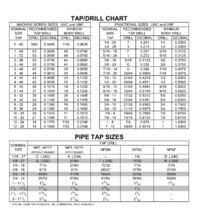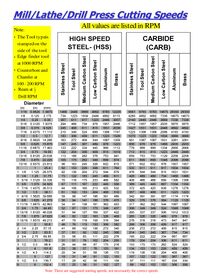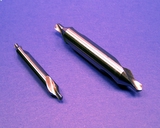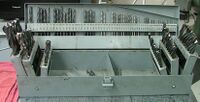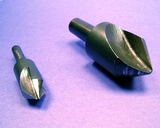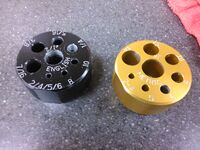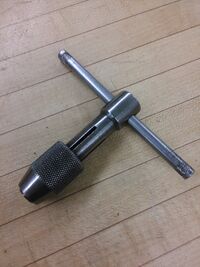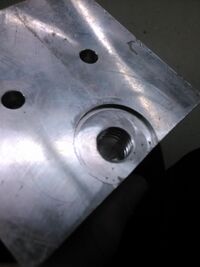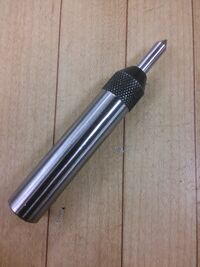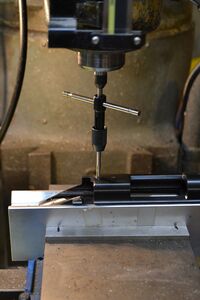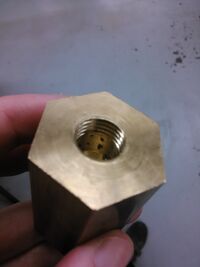Drilling and Tapping
Description[edit | edit source]
Tapping is the process of creating threads on the inner surface of a drilled hole. A variety of taps are available in the shop to match almost any screw type available, including metric and standard measurements. Information required to select the drill bit includes thread count, diameter, thread pitch, and coarse/fine threads.
Good Practices[edit | edit source]
Using Tap Guides[edit | edit source]
The tap guides, located in the same drawer as the taps, are crucial to creating a straight and usable tap. When tapping on a machine such as the Mill or Lathe, the tap is automatically centered and straight. Be wary of tap alignment when doing it manually, as the human eye isn't as accurate as a perfectly 90 degree tap guide.
Using Oil[edit | edit source]
Oil is a necessity while drilling and tapping. It prevents overheating, helps clean out the chips created by the bits, assists the cutting action, and prevents the bits from squealing.
Center Drills[edit | edit source]
Creating a drilled and tapped hole first requires using a center drill. This gives the larger bits a center to align to, since most drill bits aren't perfectly centered when mounted in a drill chuck. This ensures the larger bits will drill in exactly the right place and won't walk across the part.
Pecking[edit | edit source]
While either drilling or tapping, pecking helps ensure the bits won't overheat or break. Pecking is the process of drilling into the part a way, then backing out to remove the chips and allow the part to cool. Common practice is to rotate the handle being used about a full turn, then back a half turn. Every time the bit/tap is pulled out, as many chips as possible should be removed and oil should be added to the surface and the bit/tap.
Tapping Procedure[edit | edit source]
| Example | Description |
|---|---|
| 1. Select drill size from chart.
| |
| 2. Check cutting speeds for drill bit.
| |
| 3. Make a center hole.
| |
| 4. Drill hole.
| |
| 5. Add chamfer.
| |
| 6. Get a tap guide.
| |
| 7. Tap the block.
| |
| 8. Complete the tap.
|
Alternative Tapping Methods[edit | edit source]
There are alternative ways to tapping other than by hand. It's possible to tap with the aid of the mill, lathe, and CNC. All the steps before tapping the hole are repeated before these procedures:
| Example | Description |
|---|---|
| 6. Use spring loaded center.
| |
| 7. Secure tap in hand tapping wrench. | |
| 8. Put the hand tapping wrench between the part and the spring loaded center. | |
| 9. Tap the block.
|
| Example | Description |
|---|---|
| 6. Use spring loaded center.
| |
| 7. Secure desired tap in hand tapping wrench. | |
| 8. Put the hand tapping wrench between the part and the spring loaded center. | |
| 9. Tap Lathe piece.
|
| Example | Description |
|---|---|
| Tapping on the CNC mill is fairly simple. The procedure is the same as above, but instead of tapping manually after the hole is drilled, the tap is loaded into one of the CNC mill's chucks. The program the CNC uses, MastercamX7, will take the spindle speed input by the user and calculate the exact speed it needs to lower the spindle in order to tap the part. |


